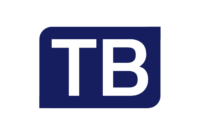As a seasoned entrepreneur who has weathered the storms of the tech industry, let me tell you, choosing the right technology stack for your hosting business is like selecting the perfect tool for a carpenter—it determines the quality of your work. In this journey, we’ll explore the intricacies of technology stacks and their profound impact on the performance, scalability, and overall satisfaction of your hosting venture.
Understanding Your Hosting Business Needs
Identifying Business Goals and Objectives
Before you embark on the quest for the ideal technology stack, sit down and envision the goals of your hosting business. Are you aiming for lightning-fast performance, scalable infrastructure, or perhaps a seamless user experience? Knowing your destination is the first step to choosing the right path.
Assessing the Target Audience and Their Requirements
Just like any good storyteller tailors their tale to their audience, a hosting business must align its technology stack with the needs and expectations of its users. Is your clientele comprised of e-commerce giants, bloggers, or developers seeking a robust platform? Understanding your audience is key to selecting a technology stack that caters to their unique demands.
Analyzing the Nature of Hosted Applications and Services
Every hosting business caters to a variety of applications and services. Are you hosting dynamic websites, content management systems, or perhaps resource-intensive applications? The nature of your hosted services should guide your choice of technology stack components.
Key Components of a Technology Stack
Web Servers
Choosing a web server is akin to selecting the foundation of your hosting infrastructure. Apache, with its reliability, or Nginx, known for its speed and efficiency? Consider your hosting business needs and decide on a web server that aligns with your goals.
Operating System
The operating system is the heartbeat of your server. Linux, with its stability and open-source nature, or Windows, known for its user-friendly interface? Select an operating system that complements your chosen web server and supports the applications you intend to host.
Database Management Systems
Databases are the libraries storing your data. MySQL for structured data, PostgreSQL for complex queries, or MongoDB for flexible, schema-less data? Tailor your choice to the data needs of your hosted applications.
Programming Language
The programming language is the language your server speaks. From the versatility of Python to the performance of Java, choose a language that aligns with your application requirements and integrates seamlessly with your web server and database.
Content Delivery Networks (CDNs)
Picture CDNs as messengers delivering your content across the globe. Integrate CDNs into your technology stack for faster content delivery and an improved user experience.
Scalability and Performance Considerations
Horizontal vs. Vertical Scaling
Imagine your business as a tree; do you make it broader (horizontal) or taller (vertical)? Understanding the scalability needs of your hosting business is crucial. Horizontal scaling for distributing traffic or vertical scaling for enhancing individual server performance—choose wisely.
Load Balancing
Load balancing is the secret sauce for even traffic distribution. Whether it’s a hardware-based solution or a software solution, integrating load balancing into your technology stack ensures optimal performance and resource utilization.
Caching Mechanisms
Caching is the magician’s trick to faster websites. Employ caching mechanisms to store frequently accessed data, reducing server load and enhancing user experience.
Security Measures
SSL/TLS Certificates
SSL/TLS certificates are the guardians of secure data transmission. Implement them within your technology stack to ensure encrypted communication between servers and users.
Firewalls and Security Protocols
Just as your home has locks and keys, your hosting infrastructure needs firewalls and security protocols. Choose the right security measures to safeguard against cyber threats and unauthorized access.
Future-Proofing Your Technology Stack
Staying Updated with Technological Advancements
In the ever-evolving tech landscape, staying updated is crucial. Follow industry trends, embrace new technologies, and be prepared to adapt your technology stack for future advancements.
Flexibility and Interoperability
A good technology stack is like a well-designed Swiss army knife—flexible and interoperable. Ensure your stack allows for easy integration of new tools and remains compatible with emerging technologies.
Conclusion
In the vast landscape of hosting, choosing the right technology stack is your compass. Summing up our journey, remember to align your technology stack with business goals, cater to your audience, and remain adaptable to the ever-changing tech currents. Your hosting venture is a story waiting to unfold—make sure it’s an epic.


